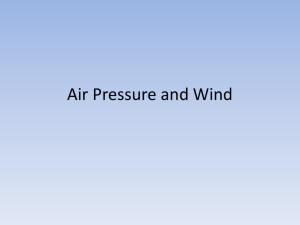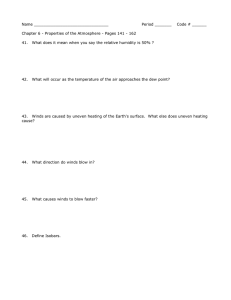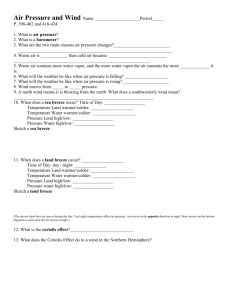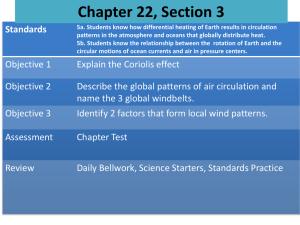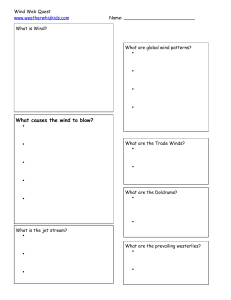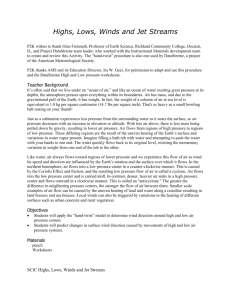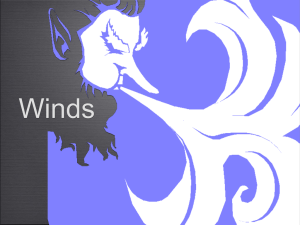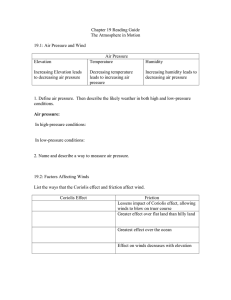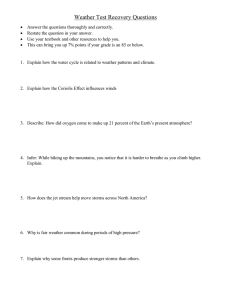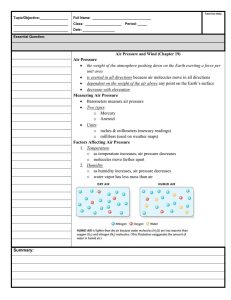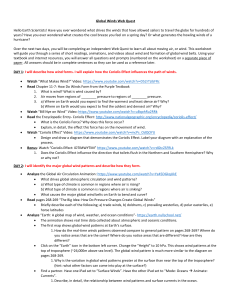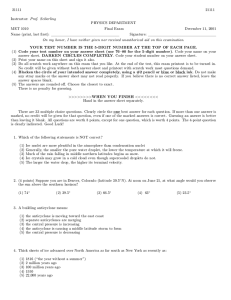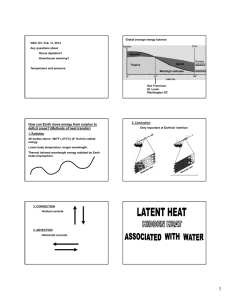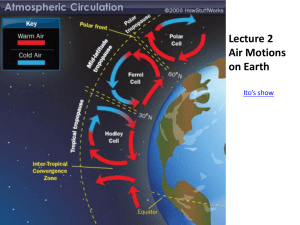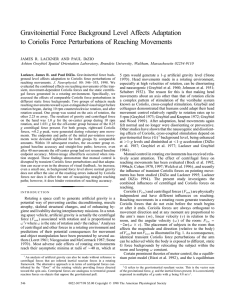Chapter 10, Section 2
advertisement
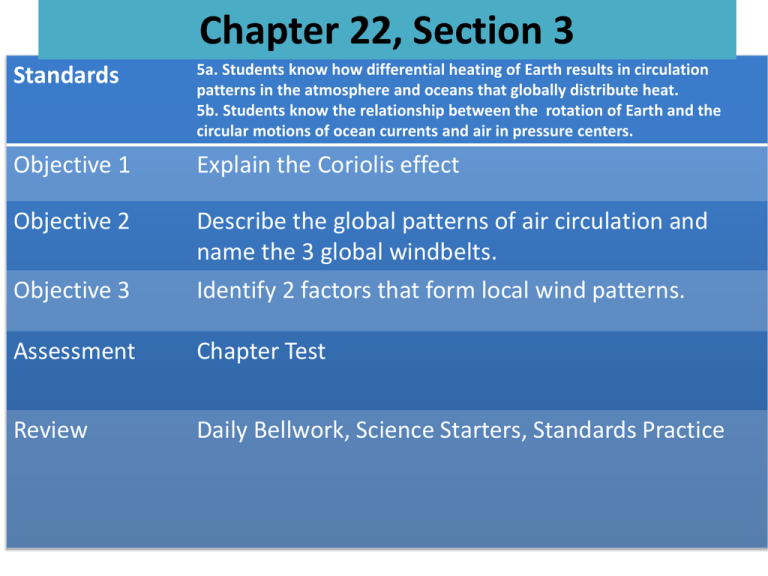
Chapter 22, Section 3 Standards Chapter 10, Section 2 5a. Students know how differential heating of Earth results in circulation patterns in the atmosphere and oceans that globally distribute heat. 5b. Students know the relationship between the rotation of Earth and the circular motions of ocean currents and air in pressure centers. Objective 1 Explain the Coriolis effect Objective 2 Objective 3 Describe the global patterns of air circulation and name the 3 global windbelts. Identify 2 factors that form local wind patterns. Assessment Chapter Test Review Daily Bellwork, Science Starters, Standards Practice Coriolis Effect The tendency of a moving object to follow a curved path rather than a straight one because of the rotation of the Earth is called the CORIOLIS EFFECT. When air moves towards the poles, it travels east faster than the land beneath it, following a curved path. In the Northern Hemisphere wind is deflected to the right and Southern Hemisphere=left. Faster the wind or the longer the distance, the greater the CORIOLIS EFFECT. Coriolis Effect Video Global Winds Each hemisphere has 3 wind belts, or a convection cell (loop) of wind flow. TRADE WINDS—winds that flow towards the equator between 0 and 30 degrees latitude WESTERLIES– Wind flowing towards the poles but deflected by the Coriolis effect, between 30 and 60 degrees latitude POLAR EASTERLIES– Winds that blow east to west between 60 and 90 degrees latitude (near the poles). JET STREAMS– narrow bands of high-speed winds in the upper troposphere and lower stratosphere Local Winds LAND and SEA BREEZES– Land heats up faster than water so the air above the land is warmer. This warm air rises and the cooler air above the sea flows over the land = SEA BREEZE. Overnight, land cools quickly but the air over the water does not. So the warmer air over the water rises and the cooler land air flows over the water creating a LAND BREEZE. VALLEY BREEZE—warm air above a valley blows upslope MOUNTAIN BREEZE—cool air flows down a mountain Brainpop WIND INTERACTIVE/Assessment Use the diagram on page 562 or the one below and copy and label it in your notes.
